Water is a precious and limited resource that cannot be wasted. With rising temperatures, water use is also rising, causing water shortage concerns throughout the world. Costco understands the importance of water conservation and in fiscal year 2021 adopted Sustainable Development Goal (SDG) 6 – Clean Water and Sanitation – as one of our SDG goals. We have implemented comprehensive water management programs to help us reduce operational water waste and improve the quality of both our wastewater and stormwater discharges.
COMPREHENSIVE WATER MANAGEMENT SYSTEMS

Costco continues to drive operational efficiency by lowering overall operating costs through the elimination of waste in water consumption. Ultimately, this reduces related sewer, energy and maintenance costs. We are assessing our current water management systems to consider new and emerging technologies. Considering our operational water volumes for all U.S. and international sites, we are seeking technologies that deliver high quality, real-time performance data and leak and/or consumption anomalies for our operations. Our construction team is seeking innovative metering and management solutions systems to support all U.S. and international sites with alerts to address equipment repairs and to assess and optimize water consumption in our operations. We recognize water management is a top priority when considering operational waste controls, in establishing baseline performance, in targeting efficiencies and in considering innovative ways to drive improved performance by site.
Various water management systems are currently installed in our warehouses in the U.S., Canada, Mexico, Korea and Japan. We intend to expand monitoring systems to our other locations worldwide. There are currently over 1,000 meters installed on main water lines, cooling tower lines and irrigation systems with installations continuing as needed.
By installing water metering systems, Costco locations can now:
- Detect in real-time, mechanical failures so staff can fix issues quickly
- Identify operational waste so that behaviors can be modified through education and training
- Consume less water to lower the amount of energy and cost necessary to run mechanical equipment and systems, which in turn reduces Costco’s carbon footprint, expenses, and environmental impact
- Create an enhanced awareness of water use and stewardship throughout all facets of operation
While we haven't finalized our water usage data systems, we are able to estimate our global water usage for the last two years as follows:
| COSTCO'S ESTIMATED GLOBAL OPERATIONAL WATER USAGE SUMMARY |
|
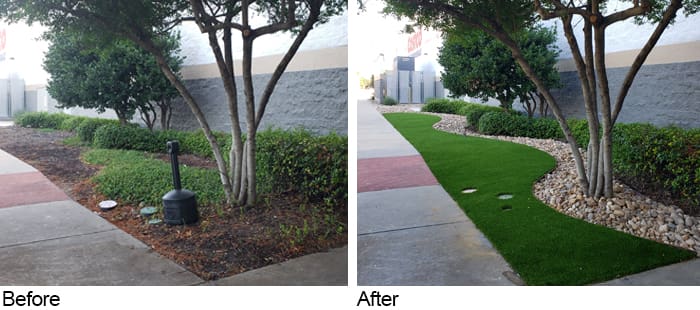
GROUNDWATER & IRRIGATION SYSTEMS
While landscaping is important for the beauty it provides, as well as the preservation of natural habitat, Costco also understands the need to be responsible regarding our irrigation practices and in managing the quality of our stormwater discharge.
By using water monitoring systems, Costco is able to reduce water waste and protect assets such as parking lot surfaces, retaining walls, and building foundations. This helps our operators identify issues immediately and avoid expensive repairs later. Other structural and operational enhancements include:
- Utilizing smart technologies and subsurface irrigation to improve efficiency and to reduce water waste in irrigation systems
- Installing bioswales to preserve groundwater and to prevent runoff in select locations
- Integrating native, drought-resistant, and artificial landscaping materials to minimize irrigation, as illustrated above at our West Plano, TX location
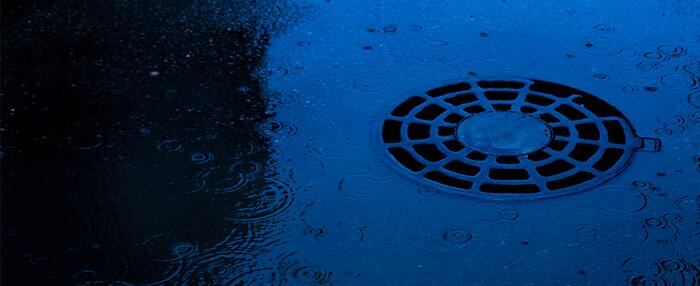
WASTEWATER & STORMWATER PLANS
Each U.S. Costco location has wastewater and stormwater plans and procedures to ensure that we remain in compliance with local and federal regulations. We have a team of Environmental Sustainability and Compliance Managers throughout the U.S. who, in partnership with our corporate water systems team, work directly with all locations to track and respond to water waste or quality concerns. International locations are also focusing on waste and stormwater management.
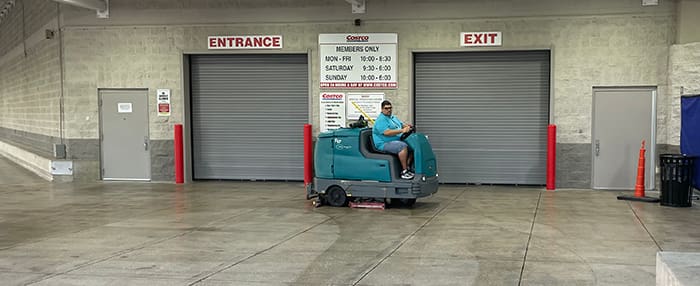
EXAMPLES OF OPERATIONAL WATER SAVINGS
Locations in the Texas and Southeast regions are utilizing a program to reduce water usage by changing the way they clean the breezeway at the location entrance. They changed from pressure washing to using the ride-on floor scrubber. Annual water usage was reduced from 66,000 gallons per year to less than 9,000 gallons based on a three times per week schedule.
In some U.S. and Canada locations we are testing a system to capture condensation from the EVAC systems to be used to fill floor scrubbers, saving thousands of gallons of municipal water each year.
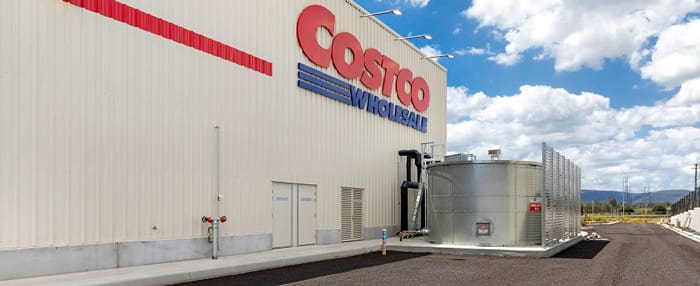
In Australia, rainwater is captured and stored onsite for use in toilets, cooling refrigeration systems and irrigation.
In the Los Angeles region, we are using a water capture system to harvest rain water and refrigeration condensate that is stored on site in large, underground cisterns. This water is used for irrigation. If the tanks are ever completely full the location issues the water back to the city.
In several Arizona locations, we are reducing the amount of municipal water by changing the method of treating hard water used in our cooling towers. By removing damage causing minerals we were able to reuse the water more often to cool the refrigeration coils. We are able to track the water savings using water metering and estimate an annual savings of 995,000 gallons per location, per year. In addition, removing minerals from the process has the potential to extend the refrigeration equipment’s life span.
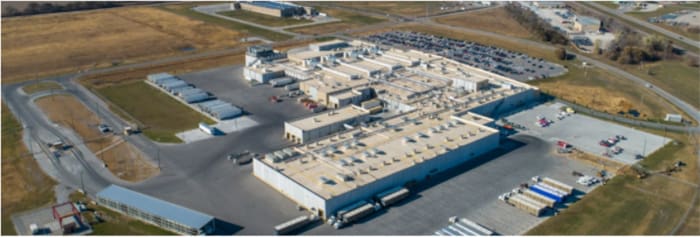
VERTICAL INTEGRATION FACILITIES - WATER SAVINGS
In 2019, Costco began selling chicken and romaine lettuce produced in new, vertically integrated facilities. Both facilities have been designed with water preservation, re-use, efficiency and treatment in mind.
Costco worked with the City of Fremont, Nebraska, to expand their wastewater treatment plant in order to ensure that the wastewater generated at the chicken plant is treated before returning to the municipal wastewater treatment plant. In addition, through a process of air chilling, data suggests substantial water savings of 2 million gallons per week in comparison to typical water chill processing.
At the romaine lettuce greenhouse, early estimates indicate that 80% less water will be used in comparison to conventional farming and that there will be 0% wastewater runoff. In addition, the water not absorbed by the plant through transpiration, which is about 80%, is recycled.

Car Washes
Costco is a member of WaterSavers®, a designation by the International Car Wash Association awarded to car washes that meet strict water usage criteria. Wastewater in the car wash is reduced in the following ways:
- Digital water metering identifies spikes in usage that indicate a potential leak or equipment malfunction. With real-time monitoring, these spikes can be addressed immediately.
- Every wash has a reclaim system to filter and recycle water to be used for everything that does not require fresh water. This cuts fresh water use by more than 50%.
- Water main shut-off valves are utilized when the car wash is not in use.
- All car washes strictly follow water usage permits and requirements.